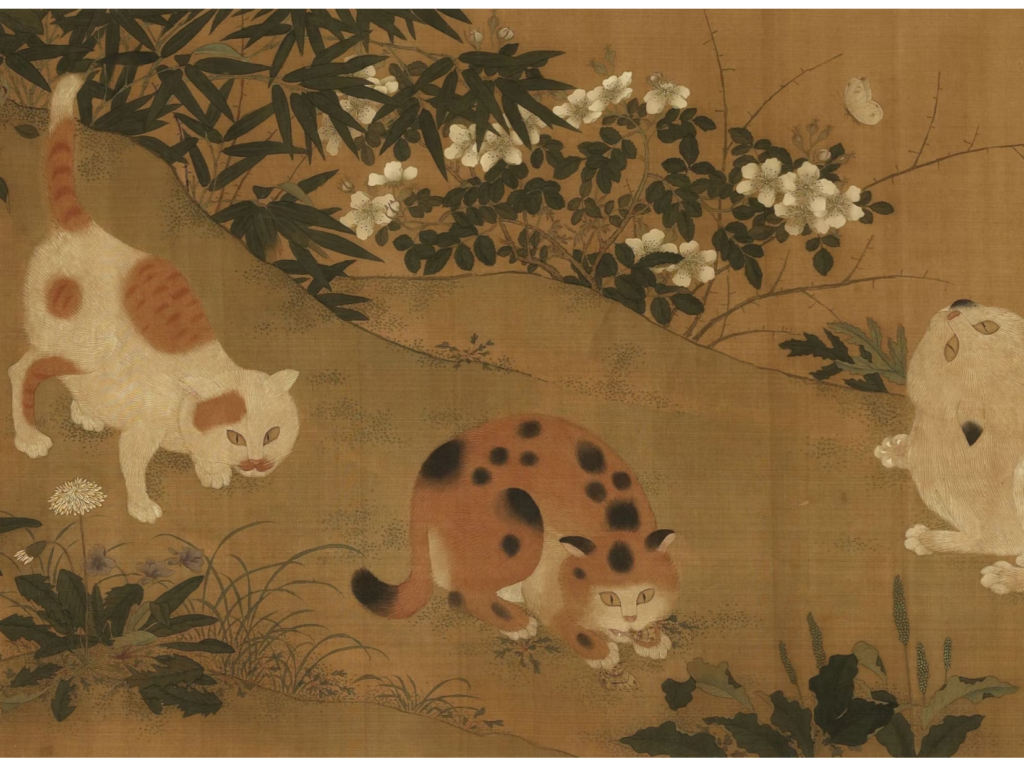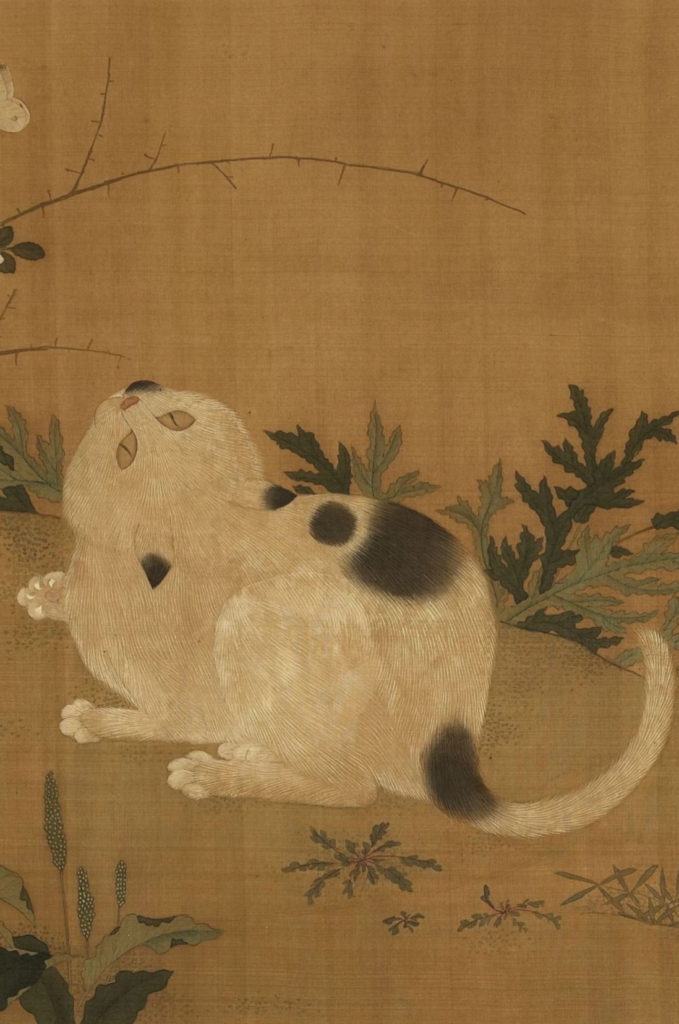In traditional Chinese culture, the cat is far more than a domestic companion. It is a symbol of longevity, mystery, and protection. Often regarded as a spiritual guardian with almost supernatural sensitivity, the cat has been admired for its quiet strength, practical usefulness, and auspicious associations.

Why Was the Cat Seen as a Symbol of Fortune?
The Chinese have long believed that cats bring luck and prosperity. The idea that cats have “nine lives”—a reflection of their resilience and agility—enhanced their image as protectors of peace and good fortune. Their ability to guard homes by catching mice made them revered as both spiritual and practical blessings. In folk traditions, cats often appear as auspicious symbols, believed to ward off misfortune and attract positive energy.

Who Kept Cats in Ancient Times?
From renowned scholars to everyday families, people across all social classes in ancient China kept cats. Gentle by nature and fond of human companionship, cats served as both affectionate partners and diligent protectors of grain stores. Their presence not only brought warmth to a household but also played a functional role in agricultural societies where food security was vital. They truly embodied the harmony of beauty and utility.
What Gives Cats Their Mystical Reputation?
Cats are night creatures with eyes that change shape depending on light, and their behavior is often elusive and unpredictable. These qualities fascinated ancient Chinese observers, who associated cats with heightened perception and spiritual awareness. Some believed cats could sense invisible presences or warn of incoming danger, which is why they became linked with the mysterious and the sacred.
How Were Cats Used to Ward Off Evil?
It was common for people to tie protective amulets or talismans around a cat’s neck, believing that the animal could guard the home from harmful spirits. If a cat suddenly stared at an empty corner or refused to enter a room, this behavior might be interpreted as a sign of bad energy. The presence of a cat was thus considered a safeguard—a silent sentinel that kept danger at bay.
How Was the Cat’s Mouse-Hunting Skill Documented in Literature?
Historical texts such as Han Feizi and Lüshi Chunqiu contain references to the intentional domestication of cats to eliminate rodents. In an agrarian society, a cat’s role in protecting grain from pests could not be overstated. Their effectiveness in this task elevated their status in both literature and daily life, cementing their place in homes across China.
How Is the Cat Linked to Longevity in Chinese Symbolism?
The word for cat, “猫” (māo), is a homophone of “耄” (mào), a classical Chinese word referring to old age. When paired with a butterfly—“蝶” (dié), which sounds like “耋” (dié), meaning a person in their seventies or eighties—the image becomes a visual pun symbolizing long life. Traditional paintings such as “A Cat Amid Spring Grasses” by Tao Cheng of the Ming Dynasty, or the Song-era “Cat and Peony”, often used this motif to convey blessings of health, age, and peace.
Why Was the Cat Not Included in the Chinese Zodiac?
The cat is absent from the Chinese zodiac for several reasons. Folklore says it was tricked by the rat and missed the zodiac race. Historically, cats arrived in China after the zodiac system was formed. Practically, cats weren’t as vital to early agrarian life as other animals already chosen.
Folk Legend: The Trick of the Rat
According to a popular folk tale, the Jade Emperor invited animals to race for a place in the zodiac. The cat and the rat, once friends, agreed to go together—but the rat tricked the cat by leaving it behind. As a result, the cat overslept or missed the race entirely, losing its spot among the twelve animals. Since then, cats have been said to hold a grudge against rats, explaining their enmity in folklore.
Historical Timing: Too Late for the Zodiac
The Chinese zodiac system was largely established by the pre-Qin period (before 221 BCE), while domestic cats were not common in China until the Western Han dynasty (206 BCE–9 CE). Cats were originally domesticated in ancient Egypt and only spread to China later through trade routes. By the time cats became part of daily life, the zodiac system had already been fixed.
Practical Symbolism: Not Close Enough to Agrarian Life
Zodiac animals were likely selected based on their symbolic relevance and practical roles in agricultural society. Animals like oxen, pigs, and dogs played important parts in farming, labor, or protection. At the time the zodiac formed, cats had not yet become essential to daily work or sustenance. Additionally, since the tiger—another feline with powerful symbolism—was already included, there may have been little cultural need to add the cat as well.
FAQ
Q: Are cats still seen as lucky in modern China?
Yes, especially in rural areas and among the elderly. Many still believe that a cat entering the house voluntarily brings good fortune.
Q: Do black cats symbolize bad luck in Chinese culture?
Unlike Western cultures, China does not have a universal negative view of black cats. In some regions, they are even seen as protectors against evil spirits.
Q: Is the belief in cats’ spiritual powers still widespread?
While not as prevalent today, traditional beliefs about cats’ sensitivity to the supernatural persist in folklore and superstitions.
Q: Are cats featured in other forms of Chinese art and symbolism?
Absolutely. Cats appear in paintings, porcelain, embroidery, and folk paper cuts, often alongside symbols of wealth, health, and happiness.